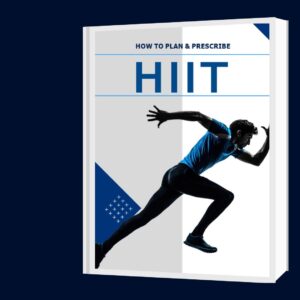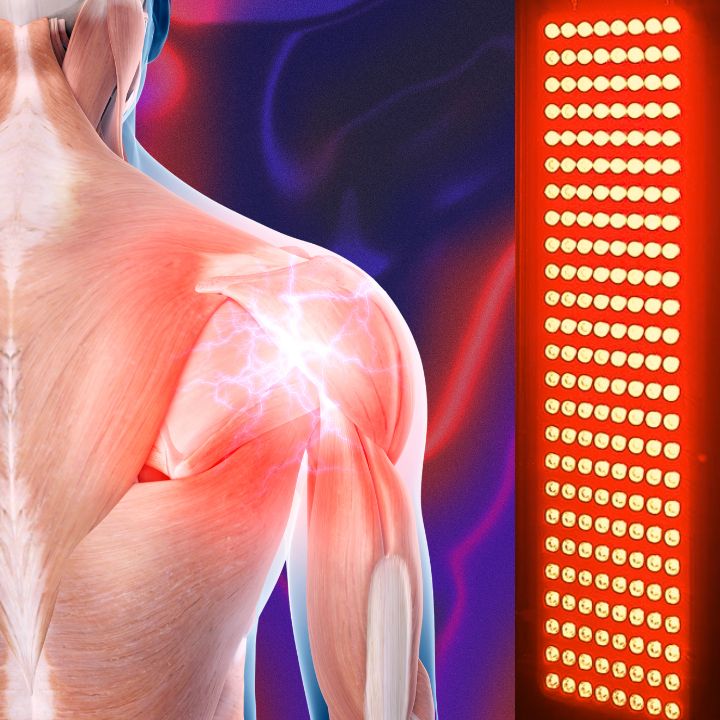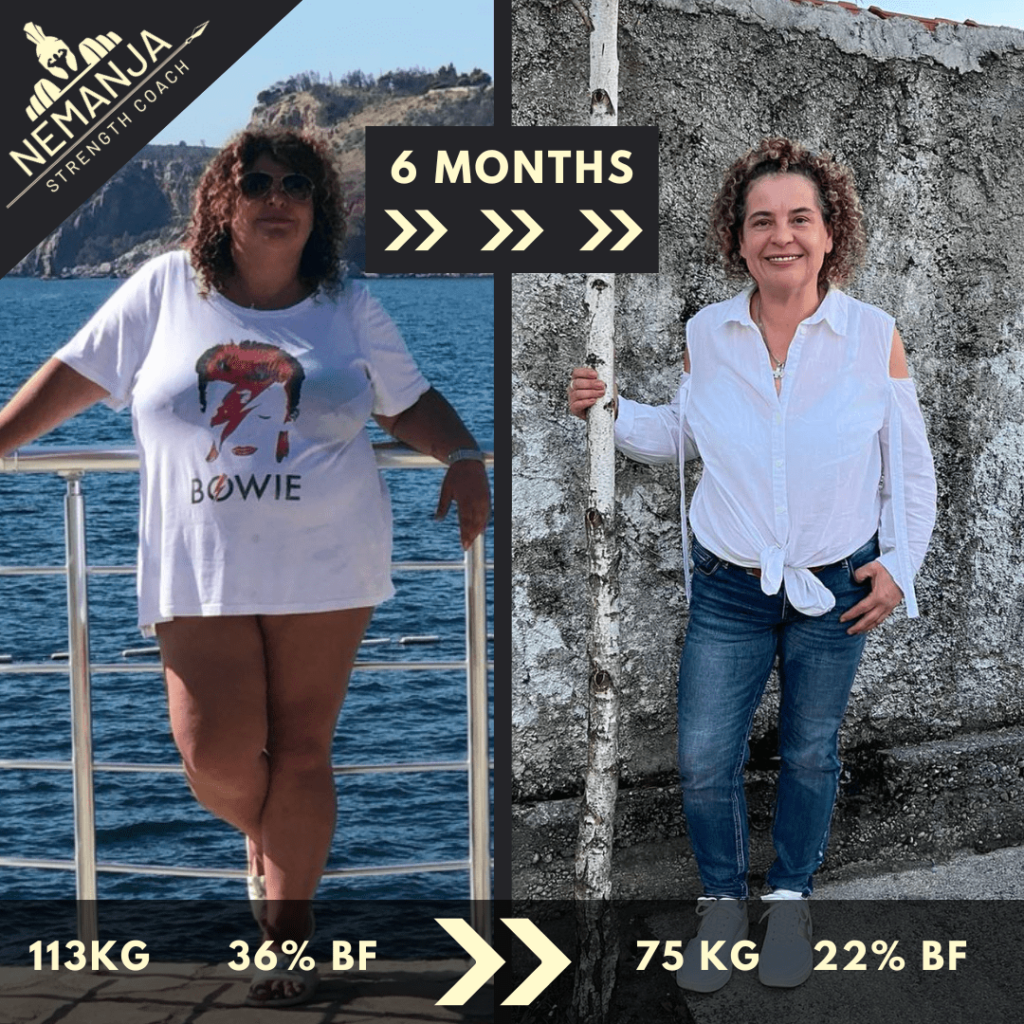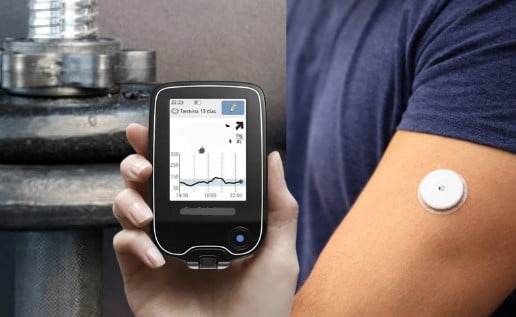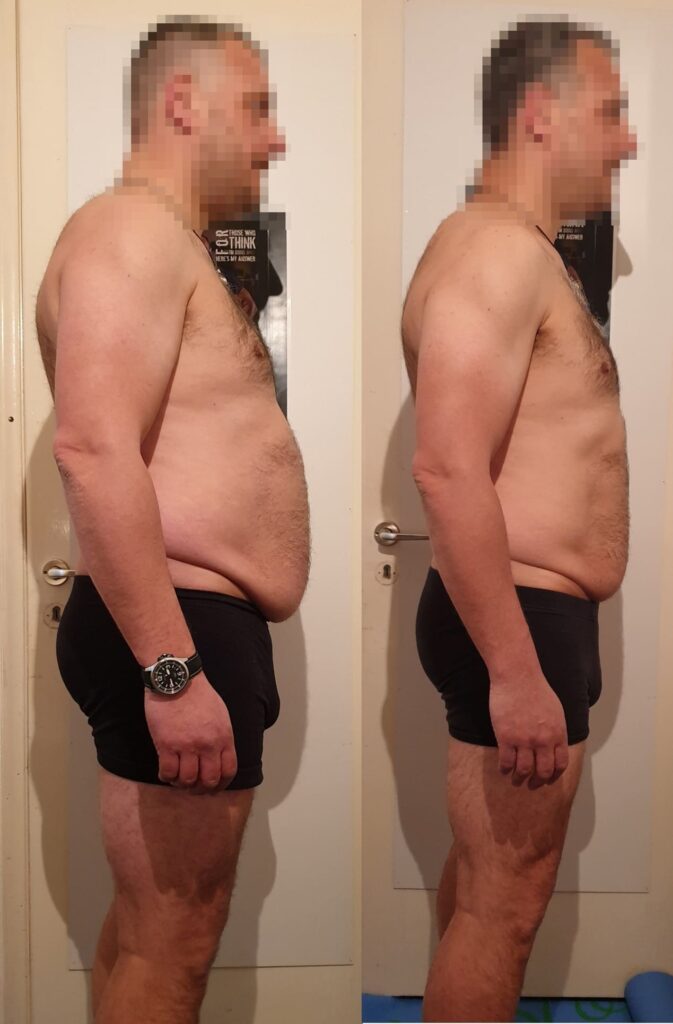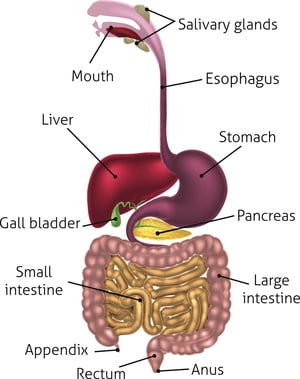Download your guide for free:
High-Intensity Interval Training
HITT is a powerful tool for coaches, trainers, and trainees when prescribed correctly.
Red Light Therapy (Photobiomodulation)
Guest Blog Article by Antonis Kakaniaris: I was first introduced to red light therapy in 2017/2018 by Charles Poliquin when he was testing & using the panels from Joov https://www.youtube.com/watch?v=-keEWWRu1aQ I remember doing some quick research on the topic but the prices were too high and there was no EU ...
Read More The Effects of Sleep Deprivation
Negative Consequences of Sleep Deprivation A lack of sleep has serious negative consequences for our body's physiological and metabolic processes. It leads to numerous health and performance problems, such as disruptions in blood sugar regulation, which increases the risk of obesity, insulin resistance, and type 2 diabetes. This is due ...
Read More Role of Epigenetics
Is it All About Genetics? The Role of Genetics in Health Genes often get blamed for causing disorders within the body, which, unfortunately, is something that affects millions of people worldwide. We often point to "bad genes" as the culprit when we aren't happy with what's happening inside our bodies. ...
Read More Being a Healthier Mom
Guest blog by Nemanja Sutanovac After a friend's suggestion, Violeta scheduled a meeting with me to review her condition and goals. At that time, at the age of 52, and after many attempts, in vitro fertilization, and the stress that accompanies it all, Violeta had a second baby and came ...
Read More Digestive Enzymes and Their Role in Health
Digestive Enzymes and Their Role in Health Digestive enzymes are one of the most crucial elements that help digest your food. They work together with HCl to ensure that the food you consume can be absorbed. Your food contains a complex structure that your gut cannot absorb easily. The three ...
Read More Decoding the Hunger Dilemma: Regain Control and Make Healthier Choices
DECODING THE HUNGER DILEMMA: REGAINING CONTROL AND MAKING BETTER CHOICES Introduction: Have you ever felt caught in a whirlwind of conflicting voices about how you deal with hunger? Me: I'm hungry!Inner voice #1: Eat!Inner voice #2: Or maybe not???Inner voice #3: EAT!Me: ... [slight panic attack] The battle between "eat ...
Read More Optimizing Gallbladder Function: The Science Behind Exercise and Nutrition
Gallbladder plays a crucial role in health and disease. Diet and exercise are perhaps the most important elements that help improve gallbladder function. Here is how exercise and diet influence gallbladder function. Role of Exercise 1. Effects on Gallstones: Research suggests a direct link between regular exercise and gallbladder health. ...
Read More The Crucial Role of the Gallbladder in Maintaining Health and Managing Disease
What is the Gallbladder? The gallbladder is a small sac that sits under the liver. You might think that gallbladder does not do much but it has a crucial role in health and disease. According to some estimates, more than 20% of Americans develop some kind of gallbladder problem, with ...
Read More The Turkey Experience: Strategies for a Healthy Life while Traveling
The Turkey Experience No, I was not teaching in Turkey. I was on vacation with my wife. So, in this article, I'm not going to talk about training or classes, but I'll discuss different strategies to stay healthy and eat right while traveling. Aliona and I decided to go to ...
Read More Exploring the Dominican Republic: Insights, Fitness, and Culinary Delights
The Dominican Experience The Dominican Republic has always been very close to my heart. I have very good friends there with whom I enjoy and share different subjects and experiences. The weather invites me to enjoy their fantastic atmosphere, the food is great, I have unforgettable memories from other ...
Read More To Use or Not to Use a Constant Glucose Monitor
My Experience with a Constant Glucose Monitor To Use or Not to Use a Constant Glucose Monitor Measuring blood glucose has been around for a very long time, using those devices where you have to prick your fingertip, get a drop of blood, and put it on the testing stripe. ...
Read More The Art of Recycling Training Programs
If you've been training people for a long time, you know that the number of training programs you can use is limited, and at some point, you end up running out of ideas, so what should you do at this point? If you identify yourself with this situation, you are ...
Read More From 108kg to 89kg: The Amazing Weight Loss Story of Nikos Without Exercise
Nikos - An ordinary man's transformation Nikos' girlfriend at that time (December 2020) was a very good friend of mine, so when she asked me if I could help him lose some fat, I happily agreed to do my best. When I first met Nikos, it was obvious that he ...
Read More Arturo Salas Grappling World Champion
Thanks to his dedication and coaching skills, Aarón Garcia, a student of the Strength Community, made Arturo Salas a World Champion in Grappling, who displayed exceptional levels of physical fitness and strength. Guest blog by Aarón García Let me tell you something about Arturo. First things first, Arturo is the ...
Read More The Importance of a Healthy Gut
The Importance of a Healthy Gut. The human gastrointestinal system is one of the body's most complicated and crucial structures. Its role in human health and disease extends far beyond food digestion. But what is the gastrointestinal system? The gastrointestinal system comprises the alimentary canal (which includes your esophagus, stomach, ...
Read More Carnitine – Different Types and What Do They Do?
Carnitine - Different Types and What Do They Do? Carnitine is a compound that helps in energy generation in the body. It is present in almost all body cells but most abundant in muscles, the brain, the liver, and the kidneys. The natural food sources of carnitine include red meat, ...
Read More BJJ World Champion – The Comeback of the Year
BJJ World Champion - The Comeback of the Year Expert coach in preparation for Olympic competitions A series of injuries kept Hind Charifi away from her sport, Brazilian Jiujitsu, for about a year. This is the story of how we did her recovery process, together with her training, to go ...
Read More Carnosine for Enhanced Performance & Recovery
What is Carnosine? Carnosine is a protein-building block. It is a dipeptide and consists of two amino acids- beta-alanine and histidine. It plays several crucial functions in the body and is found in the muscles, brain, heart, and other body organs. Carnosine mainly comes from animal sources such as beef, ...
Read More Revisiting Gironda
Vince Gironda, from the golden era of bodybuilding, was, and probably is still considered The Iron Guru. His knowledge, tricks, techniques, and innovations, primarily based on experimentation, are still applied today and will probably stay around for years to come, for a simple reason; they work! Even Arnold was trained ...
Read More The Impressive Health Benefits of Vitamin D
Vitamin D, also known as calciferol or cholecalciferol, is a fat-soluble vitamin that the human body can produce on its own. Your skin contains a type of cholesterol called 7-dehydrocholesterol that takes energy from the sun and converts it to vitamin D3. Vitamin D3 goes through the liver and kidneys ...
Read More The ELEIKO Experience
I've always been a huge fan, user, promoter, and advocate of Eleiko and Sweden is one of my favorite countries in the world, so teaching at the Eleiko headquarters in Halmstad - Sweden was like a dream come true. I have always admired Sweden for the level of education ...
Read More Red Light Therapy (Photobiomodulation)
Guest Blog Article by Antonis Kakaniaris: I was first introduced to red light therapy in 2017/2018 by Charles Poliquin when he was testing & using the panels from Joov https://www.youtube.com/watch?v=-keEWWRu1aQ I remember doing some quick research on the topic but the prices were too high and there was no EU ...
Read More The Effects of Sleep Deprivation
Negative Consequences of Sleep Deprivation A lack of sleep has serious negative consequences for our body's physiological and metabolic processes. It leads to numerous health and performance problems, such as disruptions in blood sugar regulation, which increases the risk of obesity, insulin resistance, and type 2 diabetes. This is due ...
Read More Role of Epigenetics
Is it All About Genetics? The Role of Genetics in Health Genes often get blamed for causing disorders within the body, which, unfortunately, is something that affects millions of people worldwide. We often point to "bad genes" as the culprit when we aren't happy with what's happening inside our bodies. ...
Read More Being a Healthier Mom
Guest blog by Nemanja Sutanovac After a friend's suggestion, Violeta scheduled a meeting with me to review her condition and goals. At that time, at the age of 52, and after many attempts, in vitro fertilization, and the stress that accompanies it all, Violeta had a second baby and came ...
Read More Digestive Enzymes and Their Role in Health
Digestive Enzymes and Their Role in Health Digestive enzymes are one of the most crucial elements that help digest your food. They work together with HCl to ensure that the food you consume can be absorbed. Your food contains a complex structure that your gut cannot absorb easily. The three ...
Read More Decoding the Hunger Dilemma: Regain Control and Make Healthier Choices
DECODING THE HUNGER DILEMMA: REGAINING CONTROL AND MAKING BETTER CHOICES Introduction: Have you ever felt caught in a whirlwind of conflicting voices about how you deal with hunger? Me: I'm hungry!Inner voice #1: Eat!Inner voice #2: Or maybe not???Inner voice #3: EAT!Me: ... [slight panic attack] The battle between "eat ...
Read More Optimizing Gallbladder Function: The Science Behind Exercise and Nutrition
Gallbladder plays a crucial role in health and disease. Diet and exercise are perhaps the most important elements that help improve gallbladder function. Here is how exercise and diet influence gallbladder function. Role of Exercise 1. Effects on Gallstones: Research suggests a direct link between regular exercise and gallbladder health. ...
Read More The Crucial Role of the Gallbladder in Maintaining Health and Managing Disease
What is the Gallbladder? The gallbladder is a small sac that sits under the liver. You might think that gallbladder does not do much but it has a crucial role in health and disease. According to some estimates, more than 20% of Americans develop some kind of gallbladder problem, with ...
Read More The Turkey Experience: Strategies for a Healthy Life while Traveling
The Turkey Experience No, I was not teaching in Turkey. I was on vacation with my wife. So, in this article, I'm not going to talk about training or classes, but I'll discuss different strategies to stay healthy and eat right while traveling. Aliona and I decided to go to ...
Read More Exploring the Dominican Republic: Insights, Fitness, and Culinary Delights
The Dominican Experience The Dominican Republic has always been very close to my heart. I have very good friends there with whom I enjoy and share different subjects and experiences. The weather invites me to enjoy their fantastic atmosphere, the food is great, I have unforgettable memories from other ...
Read More To Use or Not to Use a Constant Glucose Monitor
My Experience with a Constant Glucose Monitor To Use or Not to Use a Constant Glucose Monitor Measuring blood glucose has been around for a very long time, using those devices where you have to prick your fingertip, get a drop of blood, and put it on the testing stripe. ...
Read More The Art of Recycling Training Programs
If you've been training people for a long time, you know that the number of training programs you can use is limited, and at some point, you end up running out of ideas, so what should you do at this point? If you identify yourself with this situation, you are ...
Read More From 108kg to 89kg: The Amazing Weight Loss Story of Nikos Without Exercise
Nikos - An ordinary man's transformation Nikos' girlfriend at that time (December 2020) was a very good friend of mine, so when she asked me if I could help him lose some fat, I happily agreed to do my best. When I first met Nikos, it was obvious that he ...
Read More Arturo Salas Grappling World Champion
Thanks to his dedication and coaching skills, Aarón Garcia, a student of the Strength Community, made Arturo Salas a World Champion in Grappling, who displayed exceptional levels of physical fitness and strength. Guest blog by Aarón García Let me tell you something about Arturo. First things first, Arturo is the ...
Read More The Importance of a Healthy Gut
The Importance of a Healthy Gut. The human gastrointestinal system is one of the body's most complicated and crucial structures. Its role in human health and disease extends far beyond food digestion. But what is the gastrointestinal system? The gastrointestinal system comprises the alimentary canal (which includes your esophagus, stomach, ...
Read More Carnitine – Different Types and What Do They Do?
Carnitine - Different Types and What Do They Do? Carnitine is a compound that helps in energy generation in the body. It is present in almost all body cells but most abundant in muscles, the brain, the liver, and the kidneys. The natural food sources of carnitine include red meat, ...
Read More BJJ World Champion – The Comeback of the Year
BJJ World Champion - The Comeback of the Year Expert coach in preparation for Olympic competitions A series of injuries kept Hind Charifi away from her sport, Brazilian Jiujitsu, for about a year. This is the story of how we did her recovery process, together with her training, to go ...
Read More Carnosine for Enhanced Performance & Recovery
What is Carnosine? Carnosine is a protein-building block. It is a dipeptide and consists of two amino acids- beta-alanine and histidine. It plays several crucial functions in the body and is found in the muscles, brain, heart, and other body organs. Carnosine mainly comes from animal sources such as beef, ...
Read More Revisiting Gironda
Vince Gironda, from the golden era of bodybuilding, was, and probably is still considered The Iron Guru. His knowledge, tricks, techniques, and innovations, primarily based on experimentation, are still applied today and will probably stay around for years to come, for a simple reason; they work! Even Arnold was trained ...
Read More The Impressive Health Benefits of Vitamin D
Vitamin D, also known as calciferol or cholecalciferol, is a fat-soluble vitamin that the human body can produce on its own. Your skin contains a type of cholesterol called 7-dehydrocholesterol that takes energy from the sun and converts it to vitamin D3. Vitamin D3 goes through the liver and kidneys ...
Read More The ELEIKO Experience
I've always been a huge fan, user, promoter, and advocate of Eleiko and Sweden is one of my favorite countries in the world, so teaching at the Eleiko headquarters in Halmstad - Sweden was like a dream come true. I have always admired Sweden for the level of education ...
Read More 
